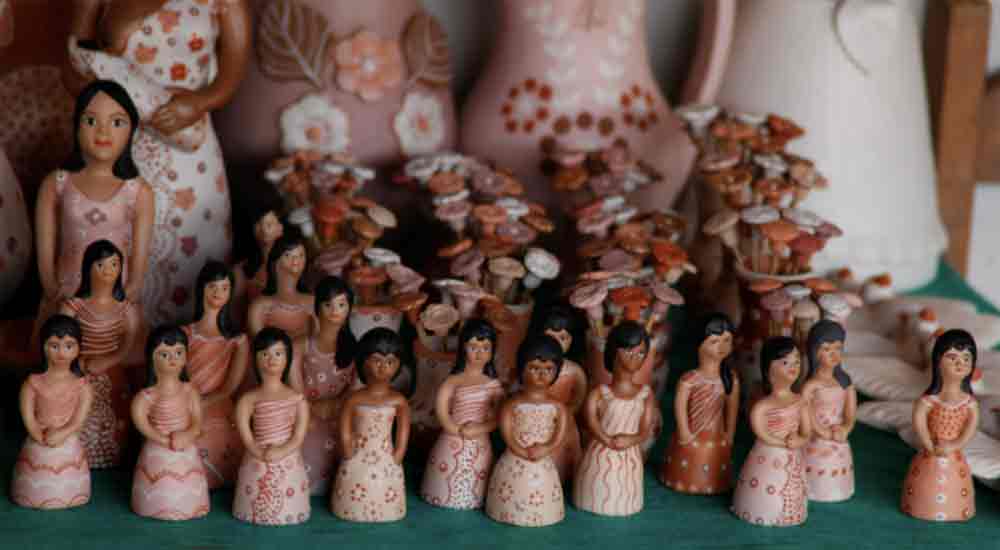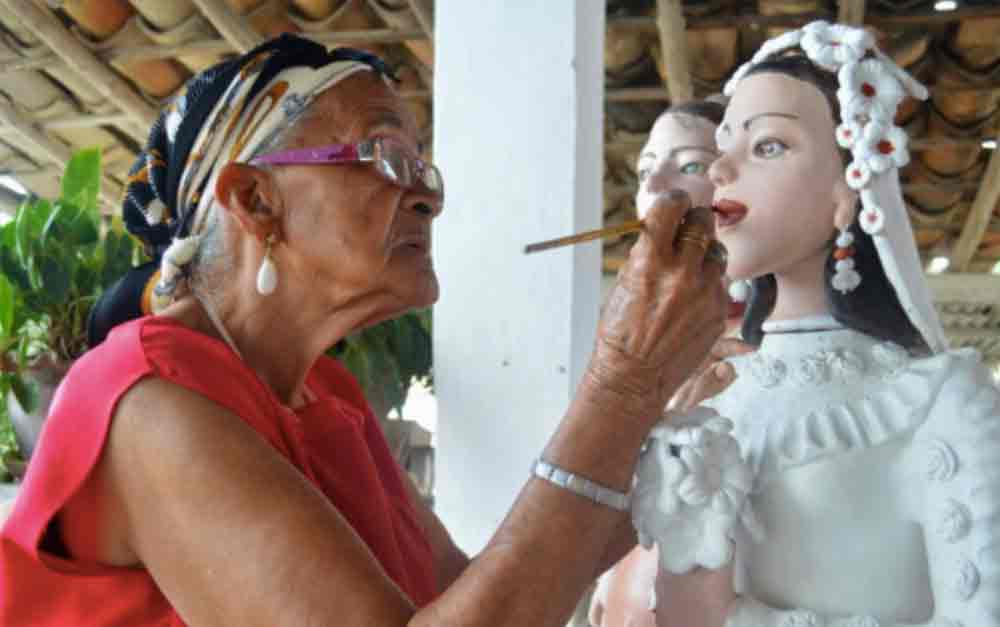Interpretion by Lara Bretzinger
Art can be a way out of poverty for some. The Vale do Jequitinhonha is a poor region long exploited by the agricultural and mining industries. The women of the region began to create art out of clay, a material they were very familiar with. Today, the sale of these works is an important source of income for many families.

In the Vale do Jequitinhonha, many resources were scarce, but clay was abundant. Working with it was part of everyday life, simple household items such as plates and bowls were made at home and also fired there. The material itself was therefore quite familiar to the women. In search of work in the cities, many men left their families. The women then began to sell their works to provide additional income. In the beginning, the dolls were often hollow and could also be used as containers.
This art continued to grow within the last century and took on a new, unique level. One of the pioneers of the change from utilitarian objects to dolls was Izabel Mendes da Cunha, who learned to work with clay from her mother and in turn taught it to her daughter. She represents particularly well how the knowledge of the processes is passed on from generation to generation. In the 1970s, the dolls were recognized as culturally significant. The Vale do Jequitinhonha is very large and the styles of dolls often vary greatly within the region. Travelers in the region visiting cities such as Turmalina, Minas Novas, and Diamantina can gain insight into the artists’ processes and participate in workshops to make their own dolls.
These works have brought great financial security to the female artists. Today many men can stay at home and participate in the family business. In addition to making money, the women of the region gained social power and a sense of community through their art.

Today, there are some women artists whose work is no longer just handicrafts, but fine art. Among them are Noemisa Batista, whose sculptures made of two-colored clay often depict everyday scenes, and Maria Lira Marques, a now well-known contemporary artist who makes paintings with the same clay.
